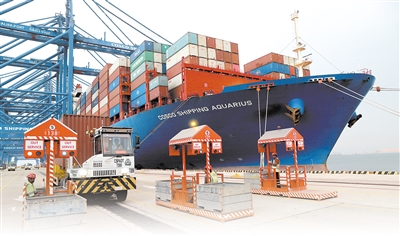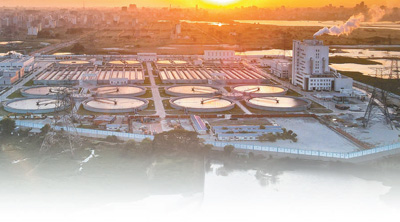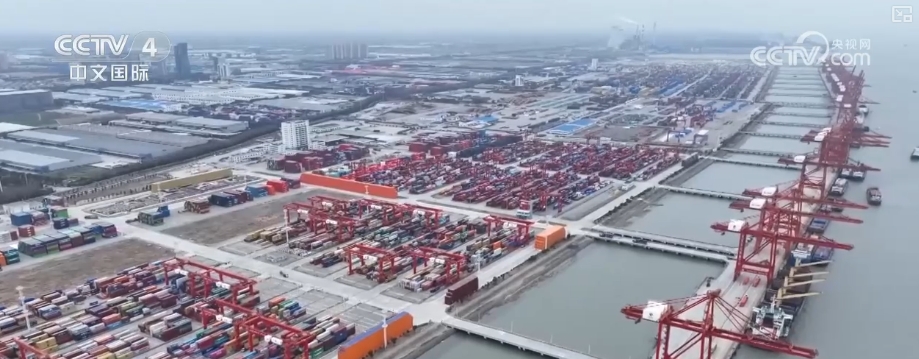The Value Of The Digital Silk Road To Win-win Cooperation
The Value Of The Digital Silk Road To Win-win Cooperation
Currently, a new round of scientific and technological revolution and industrial transformation are developing in depth, and the processes of digitization, networking, and intelligence are accelerating. Building a Digital Silk Road is of great significance.
Currently, a new round of scientific and technological revolution and industrial transformation are developing in depth, and the processes of digitization, networking, and intelligence are accelerating. Building a Digital Silk Road is of great significance. In May 2017, President Xi Jinping first proposed the concept of "Digital Silk Road" at the opening ceremony of the first "Belt and Road" International Cooperation Summit Forum, emphasizing the need to adhere to innovation-driven development, strengthen cooperation in cutting-edge fields such as digital economy, artificial intelligence, nanotechnology, and quantum computers, promote the construction of big data, cloud computing, and smart cities, and connect them into the Digital Silk Road of the 21st century. In April 2019, President Xi Jinping emphasized the construction of a digital Silk Road and an innovative Silk Road at the opening ceremony of the second "Belt and Road" International Cooperation Summit Forum. He pointed out that China will continue to implement the "Belt and Road" science and technology innovation action plan and work with all parties to promote scientific and cultural exchanges, jointly build joint laboratories, science and technology park cooperation, and technology transfer. Since then, President Xi Jinping has made it clear on multiple occasions that he wants to build a “Digital Silk Road.” A series of important expositions profoundly revealed the important value of building the Digital Silk Road in promoting global economic recovery, promoting interconnection and creating an open and win-win cooperation model, pointing out the direction for China and other countries to jointly build the "Belt and Road" with high quality and jointly build a community with a shared future in cyberspace.
A pragmatic choice based on the times and circumstances
In recent years, the digital economy has become an important engine driving global economic growth. According to relevant statistics, in 2023, the total digital economy of five countries, including the United States, China, Germany, Japan, and South Korea, has exceeded US$33 trillion, and the growth rate of the digital economy is higher than the growth rate of their GDP. Judging from the proportion of industrial digitalization in the digital economy, digitalization is accelerating its comprehensive penetration into traditional industries and promoting the transformation and upgrading of industrial structures. According to the "China Digital Economy Development Research Report (2024)", the scale of China's digital economy will reach 53.9 trillion yuan in 2023, an increase of 3.7 trillion yuan from the previous year. China's digital economy ranks second in the world in scale, and its influence and important position in the development of the global digital economy are increasingly expanding and consolidating.
Driven by the digital economy, big data, cloud computing, artificial intelligence and other technologies are accelerating innovation, and digital product trade, digital service trade and data trade are developing rapidly, which has become a new trend in the development of international trade. However, we must also note that there are still problems such as the lack of global digital governance rules, restrictions on cross-border data flow, and rising trade protectionism, which have hindered the full release of digital dividends to varying degrees. How to realize the simultaneous resonance of digital technology progress and institutional construction has become an important issue of great concern to governments and international organizations. In this context, promoting the construction of the Digital Silk Road is not only a pragmatic choice for China to further comprehensively deepen reforms and expand high-level opening up, but also an effective way to promote the construction of an inclusive and fair multilateral global digital governance system.
On the one hand, the construction of the Digital Silk Road can achieve the upgrade of the "interconnection" cooperation model. The joint construction of the "Belt and Road" has achieved tangible results in the field of "hard connectivity" of traditional infrastructure such as energy, ports, and railways. On this basis, the Digital Silk Road emphasizes its extension to cloud computing, big data, 5G, artificial intelligence, cross-border optical cables and other fields, and strengthens the connectivity of rules and standards in the digital field with the co-building countries, promotes regional digital policy coordination, and makes positive progress in the field of "soft connectivity". For example, as of the end of 2022, China has signed a "Digital Silk Road" cooperation memorandum of understanding with 17 countries to work together to create an open, fair, just, and non-discriminatory digital development environment.
On the other hand, the construction of the Digital Silk Road can provide a platform for breaking down barriers to global digital trade and promoting the coordination of multilateral rules. Compared with the rising trade protectionism in some countries, China insists on promoting open cooperation under the framework of the Digital Silk Road. By advocating safe and orderly cross-border data flow and unified and compatible technical standards, China is committed to creating a more fair, transparent and predictable business environment for enterprises that jointly build the country, and has achieved remarkable results in practice. For example, as trade exchanges between China and ASEAN further increase, currency cooperation between the two sides continues to deepen. China and ASEAN can effectively reduce transaction costs by promoting cross-border payment interconnection. For another example, under the framework of "Silk Road E-commerce", so far, China has signed memorandums of understanding on e-commerce cooperation and established bilateral e-commerce cooperation mechanisms with more than 30 countries. Partners span five continents. "Silk Road E-commerce" has become a new channel and new highlight for economic and trade cooperation. These practices not only highlight the positive role of the Digital Silk Road in promoting regional cooperation and reducing institutional costs, but also demonstrate the transparent, open, and inclusive cooperation model advocated by China in global digital governance.
Practical exploration in the field of cooperation
Through the effective combination of "hard connectivity" and "soft connectivity", the Digital Silk Road is gradually forming a digital economic cooperation mechanism that takes into account economic benefits, rule coordination and social development. From a practical perspective, the areas of cooperation on the Digital Silk Road mainly focus on the following two aspects.
The first is digital infrastructure construction. In recent years, China and the countries involved in the Belt and Road Initiative have carried out extensive cooperation on infrastructure interconnection such as cross-border optical cables, 5G base stations, and data centers. Among them, the more representative one is the China-Pakistan cross-border optical cable project jointly constructed by China and Pakistan. This is the first cross-border direct terrestrial optical cable between China and Pakistan. It is also a key project for the interconnection of the two countries' communication networks under the framework of the China-Pakistan Economic Corridor. In addition, the China-ASEAN Information Port is a regional cooperation platform jointly built by China and ASEAN countries to promote technology sharing and innovation cooperation. These projects not only improve the level of regional interconnection, but also provide important support for the development of cross-border e-commerce and the smooth flow of cross-border data. Looking to the future, the Digital Silk Road will continue to expand cooperation in areas such as data storage and intelligent computing power, and gradually form a four-in-one "land, sea, and sky" interconnection network that not only meets the development needs of various countries but can also support the digitalization process.
The second is the formulation of digital trade rules. In recent years, China has continuously deepened digital trade cooperation with countries participating in the “Belt and Road” by building a comprehensive cross-border e-commerce pilot zone and launching a new export supervision model, and accumulated facilitation policy experience that can be replicated and promoted. At the same time, the Regional Comprehensive Economic Partnership (RCEP) is the free trade agreement with the largest participating population, the largest economic and trade scale, and the greatest development potential in the world. Many of its members are also countries co-building the "Belt and Road", which has become a reflection of the continuous deepening of high-quality co-building of the "Belt and Road" in the Asia-Pacific region. RCEP provides an important reference for regional digital trade cooperation by establishing a special e-commerce chapter and providing regulations on electronic certification, electronic signatures, and online consumer protection. The in-depth implementation of the joint construction of the "Belt and Road" and RCEP not only demonstrates China's exploration and practice in promoting cross-border digital trade, but also reflects the important value of RCEP in promoting regional institutional coordination and governance innovation. These practices and experiences provide strong support for the construction of the Digital Silk Road.
Comprehensive strategies to solve difficult challenges
As the construction of the Digital Silk Road advances in depth, its role in promoting global digital economic cooperation has become increasingly prominent. It should also be noted that in the current complex international environment, the construction of the Digital Silk Road still faces a series of problems, including the fragmentation of the global digital governance mechanism, the difficulty of multilateral coordination, the increase of new digital trade barriers, prominent data security and privacy protection issues, and the insufficient voice of emerging economies in the formulation of international standards. In this regard, comprehensive policies and targeted efforts can be considered from the following aspects.
First, further promote the coordination of bilateral and multilateral rules. At the bilateral cooperation level, policy and institutional coordination can be strengthened through a series of dialogue mechanisms, and the formation of a regional digital economy and digital trade demonstration zone can be explored. At the multilateral cooperation level, we can cooperate with international organizations such as the World Trade Organization (WTO), actively participate in the digital agenda internationally, and make full use of multilateral cooperation mechanisms such as RCEP and G20 to vigorously promote mutual recognition of rules and compatibility of standards.
Second, explore the establishment of a digital trade dispute settlement mechanism. Consideration can be given to drawing on the experience of the WTO dispute settlement mechanism and exploring the establishment of mechanisms related to the Digital Silk Road to provide transparent, effective, and low-cost dispute settlement channels for enterprises engaged in cross-border e-commerce. Promote institutionalized arrangements in cross-border payments, electronic money, data circulation, electronic certification and other fields to reduce compliance costs, improve the predictability of cooperation and the efficiency and fairness of dispute resolution.
Third, strengthen cooperation on data security and privacy protection. It is necessary to strengthen the top-level design of data security governance under the framework of the Digital Silk Road, accelerate the establishment of data security protection capability standards, strengthen data security law enforcement, promote the establishment of international cooperation mechanisms for data security governance, and promote the research and development and application of privacy protection technologies; it is also necessary to expand communication and mutual learning channels, promote information exchange among countries, improve the prevention and control capabilities of risks such as cyber attacks and data leaks, and achieve basic compatibility of security standards on the premise of respecting the data sovereignty of all countries.
In general, the Digital Silk Road is not only an organic combination of digital economic development and the joint construction of the "Belt and Road", but also an important public product that promotes global digital economic cooperation. Building a Digital Silk Road not only provides a realistic path for breaking down digital trade barriers, facilitating the cross-border flow of data, releasing the value of data elements, promoting compatibility of technical standards and enhancing digital competitiveness, but also creates conditions for emerging economies to strive for a greater say in global digital governance. Looking to the future, the construction of the Digital Silk Road will continue to play a more active role in promoting global digital transformation, promoting open and inclusive development, establishing a mutually beneficial and win-win digital trade cooperation mechanism, and injecting new impetus into global economic recovery and sustainable development.





